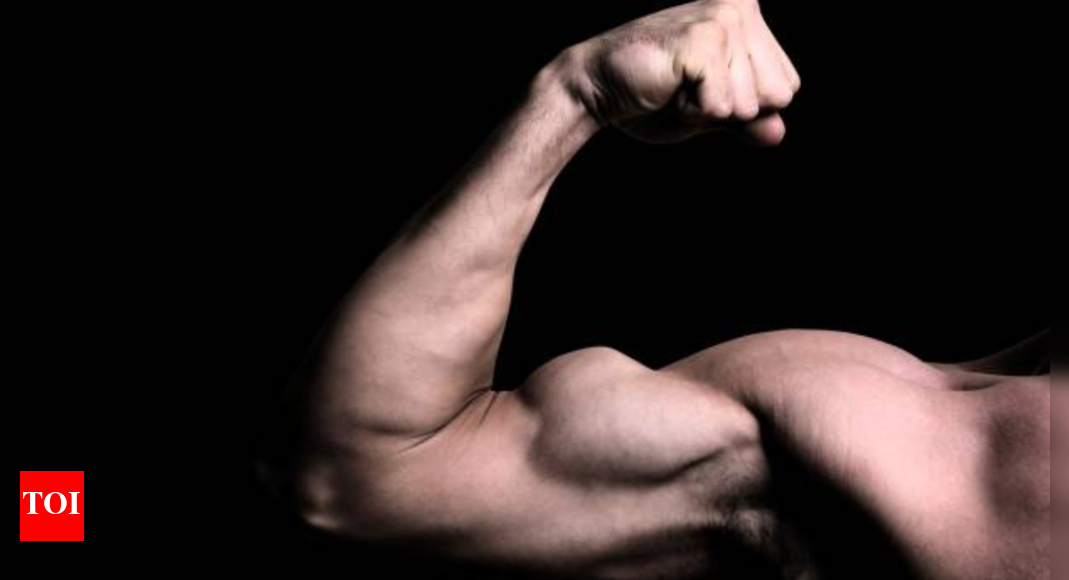Okay, so you’ve been hitting the gym, lifting weights, grinding through your sets, and maybe even chugging that post-workout protein shake like it’s a magic potion. But here’s the real talk—if your diet is stuck in the “chicken-broccoli-rice” loop, you’re probably missing out on some major muscle-building potential.Building muscle isn’t just about pushing heavy weights—it’s also about what you put on your plate. And while protein powder has its place, whole foods are where the real gains live. So let’s move beyond the boring basics and dig into some seriously underrated, muscle-loving foods that you’re probably not eating enough of (or at all).
Cottage cheese
This humble dairy product is basically a muscle-building blessing in disguise. Cottage cheese is packed with casein protein, which digests slowly—making it perfect as a nighttime snack. While you’re catching Zzz’s, casein is doing its thing, feeding your muscles and preventing overnight catabolism (that’s a fancy word for muscle breakdown).Plus, it’s got a nice dose of calcium and vitamin B12, both of which help with muscle function and recovery. Mix it with berries or a little honey if the plain version doesn’t excite your taste buds.
Lentils
If you think plant-based diets can’t fuel muscle growth, lentils are here to prove you wrong. These tiny legumes are loaded with protein, fiber, and slow-digesting carbs—perfect for sustained energy and recovery.Just one cooked cup gives you around 18 grams of protein. And because they’re high in iron and magnesium too, lentils help support oxygen transport and muscle contraction. Toss them in a salad, soup, or make a killer lentil curry.
Eggs (Yes, whole eggs)
Stop throwing away the yolks! Whole eggs are one of the most complete protein sources on the planet. And guess what? The yolk is where all the good stuff lives—healthy fats, vitamins A, D, E, and choline, which helps with muscle control and brain function.Studies even show that eating whole eggs post-workout may stimulate more muscle protein synthesis than egg whites alone. Scramble ’em, boil ’em, or poach ’em—just eat the whole thing.
Greek yogurt
Not to be confused with regular yogurt, Greek yogurt is strained to pack in more protein—about twice as much. A single serving can have 15 to 20 grams of protein, plus it comes with gut-friendly probiotics.Bonus? It’s versatile. Eat it sweet with fruit and granola, or go savory with herbs and olive oil for a high-protein dip. It’s like protein powder, but in spoonable, delicious form.
Pumpkin seeds
These crunchy little seeds are way more than a seasonal Halloween thing. Pumpkin seeds are a sneaky source of protein, magnesium, zinc, and healthy fats—all crucial for muscle growth, recovery, and testosterone production.A handful has about 7 grams of protein and tons of minerals. Sprinkle them on oats, salads, yogurt, or eat them solo when you need a salty snack that’s actually good for you.
Quinoa
Quinoa isn’t just trendy—it’s actually a complete protein, which means it has all nine essential amino acids. Not many plant foods can claim that.It’s also rich in complex carbs to fuel your workouts and contains iron and magnesium for muscle performance. Use it instead of rice or throw it in bowls with veggies and grilled meats. Your muscles will thank you.
Sardines
Sardines are one of the most nutrient-dense foods you can eat. They’re loaded with protein, omega-3 fatty acids (which help reduce muscle inflammation), and vitamin D—a must-have for strong bones and testosterone regulation.Plus, they come ready to eat. Throw them on toast, crackers, or mix into pasta. Yeah, they’re a little fishy, but totally worth it.Building muscle isn’t just about eating more—it’s about eating smarter. Sure, grilled chicken and protein shakes work, but they’re not the whole story. Your muscles crave variety, nutrients, and foods that fuel recovery, hormones, and long-term strength.So next time you’re planning your grocery list, toss in some of these underrated muscle-building heroes. Because real gains aren’t just made in the gym—they’re made in the kitchen, one bite at a time.
var _mfq = window._mfq || [];
_mfq.push([“setVariable”, “toi_titan”, window.location.href]);
!(function(f, b, e, v, n, t, s) {
function loadFBEvents(isFBCampaignActive) {
if (!isFBCampaignActive) {
return;
}
(function(f, b, e, v, n, t, s) {
if (f.fbq) return;
n = f.fbq = function() {
n.callMethod ? n.callMethod(…arguments) : n.queue.push(arguments);
};
if (!f._fbq) f._fbq = n;
n.push = n;
n.loaded = !0;
n.version = ‘2.0’;
n.queue = [];
t = b.createElement(e);
t.async = !0;
t.defer = !0;
t.src = v;
s = b.getElementsByTagName(e)[0];
s.parentNode.insertBefore(t, s);
})(f, b, e, ‘https://connect.facebook.net/en_US/fbevents.js’, n, t, s);
fbq(‘init’, ‘593671331875494’);
fbq(‘track’, ‘PageView’);
};
function loadGtagEvents(isGoogleCampaignActive) {
if (!isGoogleCampaignActive) {
return;
}
var id = document.getElementById(‘toi-plus-google-campaign’);
if (id) {
return;
}
(function(f, b, e, v, n, t, s) {
t = b.createElement(e);
t.async = !0;
t.defer = !0;
t.src = v;
t.id = ‘toi-plus-google-campaign’;
s = b.getElementsByTagName(e)[0];
s.parentNode.insertBefore(t, s);
})(f, b, e, ‘https://www.googletagmanager.com/gtag/js?id=AW-877820074’, n, t, s);
};
function loadSurvicateJs(allowedSurvicateSections = []){
const section = window.location.pathname.split(‘/’)[1]
const isHomePageAllowed = window.location.pathname === ‘/’ && allowedSurvicateSections.includes(‘homepage’)
const ifAllowedOnAllPages = allowedSurvicateSections && allowedSurvicateSections.includes(‘all’);
if(allowedSurvicateSections.includes(section) || isHomePageAllowed || ifAllowedOnAllPages){
(function(w) {
function setAttributes() {
var prime_user_status = window.isPrime ? ‘paid’ : ‘free’ ;
var geoLocation = window?.geoinfo?.CountryCode ? window?.geoinfo?.CountryCode : ‘IN’ ;
w._sva.setVisitorTraits({
toi_user_subscription_status : prime_user_status,
toi_user_geolocation : geoLocation
});
}
if (w._sva && w._sva.setVisitorTraits) {
setAttributes();
} else {
w.addEventListener(“SurvicateReady”, setAttributes);
}
var s = document.createElement(‘script’);
s.src=”https://survey.survicate.com/workspaces/0be6ae9845d14a7c8ff08a7a00bd9b21/web_surveys.js”;
s.async = true;
var e = document.getElementsByTagName(‘script’)[0];
e.parentNode.insertBefore(s, e);
})(window);
}
}
window.TimesApps = window.TimesApps || {};
var TimesApps = window.TimesApps;
TimesApps.toiPlusEvents = function(config) {
var isConfigAvailable = “toiplus_site_settings” in f && “isFBCampaignActive” in f.toiplus_site_settings && “isGoogleCampaignActive” in f.toiplus_site_settings;
var isPrimeUser = window.isPrime;
var isPrimeUserLayout = window.isPrimeUserLayout;
if (isConfigAvailable && !isPrimeUser) {
loadGtagEvents(f.toiplus_site_settings.isGoogleCampaignActive);
loadFBEvents(f.toiplus_site_settings.isFBCampaignActive);
loadSurvicateJs(f.toiplus_site_settings.allowedSurvicateSections);
} else {
var JarvisUrl=”https://jarvis.indiatimes.com/v1/feeds/toi_plus/site_settings/643526e21443833f0c454615?db_env=published”;
window.getFromClient(JarvisUrl, function(config){
if (config) {
const allowedSectionSuricate = (isPrimeUserLayout) ? config?.allowedSurvicatePrimeSections : config?.allowedSurvicateSections
loadGtagEvents(config?.isGoogleCampaignActive);
loadFBEvents(config?.isFBCampaignActive);
loadSurvicateJs(allowedSectionSuricate);
}
})
}
};
})(
window,
document,
‘script’,
);
#Musclebuilding #foods #youre #eatingbut



